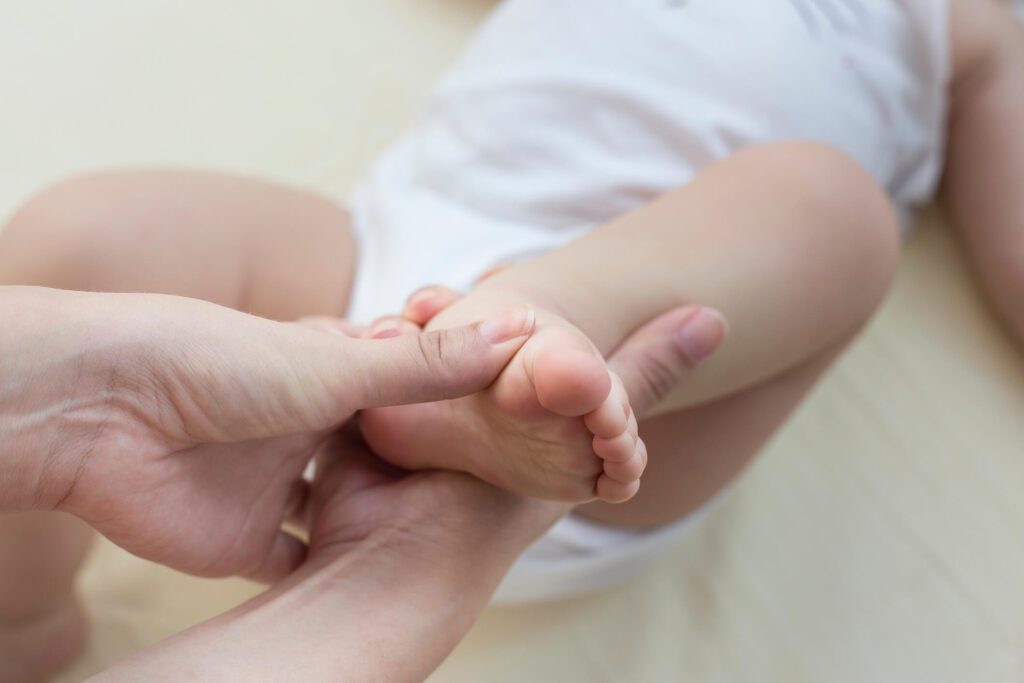For expectant parents, an ultrasound scan can be a time tinged with anticipation and nervousness. Amidst the excitement, receiving the unexpected news that your baby has congenital talipes equinovarus – or clubfoot – can fill you with uncertainty and concern. But it’s important to know that with the right support and medical attention, clubfoot can be managed and treated effectively.
Let’s explore some of the treatments available for clubfoot, and learn more about the vital role of physiotherapy in setting those little feet on the right path.
The nitty gritty of clubfoot
Clubfoot is a condition that results in the abnormal development of the muscles, tendons and bones in the foot during pregnancy. It occurs in about one in 1000 live births across the world, making it one of the most common congenital limb deformities. Usually diagnosed at a 20-week ultrasound scan or at birth, clubfoot is characterised by the foot being abnormally turned inward and downward.
The exact cause of clubfoot isn’t certain. Some believe it is a result of a combination of genetic and environmental factors during early pregnancy. It doesn’t hurt and can be corrected – but early intervention is crucial.
Treating clubfoot
The Ponseti method is widely regarded as the preferred method of correction. Named after the man who developed it, Ignacio Ponseti, it involves a series of gentle manipulations, plaster casting and temporary bracing to gradually reposition the foot. Often the Achilles tendon is cut to lengthen the tendon.
Relapse is not unusual and, in the most resistant cases, surgical intervention is necessary to correct the foot’s positioning.
Babies treated using the Ponseti method can successfully achieve functional mobility.
How physiotherapy treatment can help conquer clubfoot
Physiotherapy can play an integral role in managing clubfoot, or assist with rehabilitation post-surgery.
Effective physiotherapy treatment should focus on strengthening the muscles, restoring range of motion and helping children achieve the best possible functional outcomes.
A physio near me with specialised knowledge of clubfoot can provide gentle stretching and targeted mobilisation exercises to improve the foot’s flexibility and make it more amenable to correction.
And for children who have undergone successful treatment, a physiotherapist can work closely with them to develop proper walking patterns to ensure they walk with confidence and stability.
Beyond treatment, a physiotherapist can also offer lifestyle support and education to families including exercises and stretches that can be incorporated into their daily routines.
Clubfoot and physiotherapy – a multidisciplinary approach
Treating clubfoot is a collaborative method that involves healthcare professionals – including a physiotherapist – working together to provide holistic care.
Speak to our physiotherapy team about the pivotal role we can play in ensuring your child can overcome the challenges of clubfoot to achieve their full potential and independence.
Book a consultation at our physiotherapy clinic near me today.

